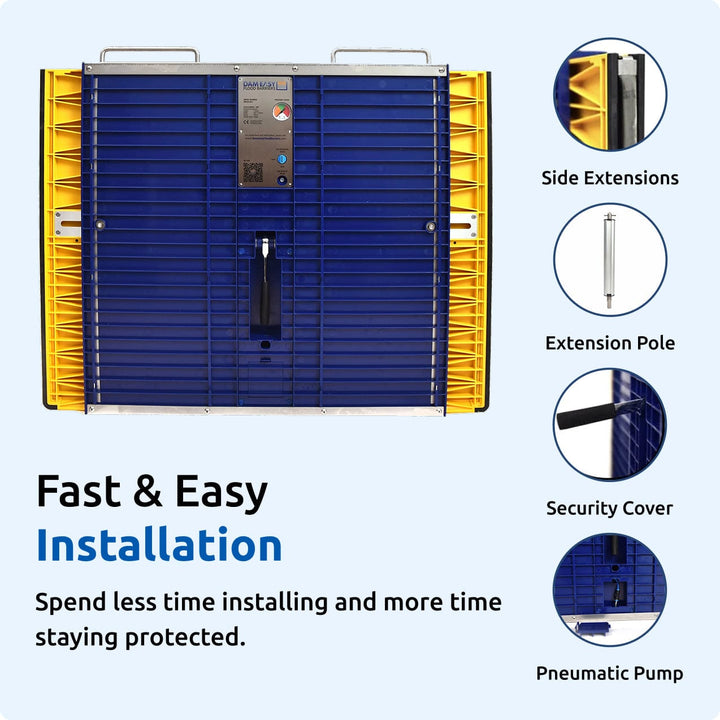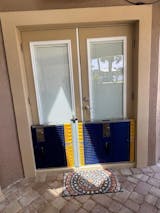A tornado warning is an extremely urgent alert. Depending on where you live and what the local arrangements are, tornado warnings may come through radio, SMS messages from the official, TV broadcasts, and even special sirens.
If you receive a tornado warning, you don`t have much time for decision-making and definitely should not go outside to check for yourself how bad the situation is. A tornado warning means that you need to take shelter immediately.
“The time it can take to seek visual confirmation is time you are losing to respond,” said Deanna Hence, an assistant professor of atmospheric sciences at the University of Illinois Urbana-Champaign.
Yes, it can be a pretty scary situation, and it is of course best to know what you should do to stay safe, secure your loved ones, and avoid unnecessary movements that can turn out fatal.
That is why we came up with a brief guide that will help you work out an emergency plan and stay safe in case of a tornado warning.
Find a Shelter
First and foremost, it is essential to know exactly where you and your family can stay safe in case of a tornado. From movies, we mainly know that the basement is the best place to hide, but a tornado warning can catch you in the middle of a street, in a shopping mall, or even when you are traveling in a foreign country.
Here is how you can easily find a safe place to hide from the destructive force of a tornado:
- Storm Shelter or Basement: Ideally, the safest place during a tornado is a designated storm shelter or a basement. If you have one, ensure it's clear and easily accessible.
- Interior Room: If a basement isn't available, choose an interior room on the lowest level of your house, away from windows and exterior walls. Bathrooms or closets often work well because they typically have more structural support.
- Avoid Windows: Stay away from windows, as they can shatter during a tornado. Flying debris is one of the most dangerous aspects of tornadoes.
- Mobile Homes or Vehicles: If you live in a mobile home, try to seek a sturdier shelter nearby. Do not stay in a mobile home during a tornado. If you're in a vehicle, leave it immediately and seek shelter indoors if possible. If not, find a low-lying area and lie flat, covering your head.
- Stay Informed: Keep a weather radio or a reliable source of weather updates handy. Tornadoes can develop quickly, so being aware of the weather conditions is crucial.
- Practice Drills: Regularly practice tornado drills with your family, so everyone knows where to go and what to do in case of an emergency.
- Community Shelters: If you don’t have a safe place at home, find out if your community has designated storm shelters or safe places nearby.
Remember, the key is to find the most interior and structurally sound location possible to protect yourself from the high winds and debris associated with tornadoes.

Evacuation
Usually, when we discuss various natural disasters, we advise thinking through your evacuation plan, preparing a vehicle, and building the safest route to get to the high ground.
A tornado warning is not the case. It is extremely dangerous to try and evacuate the area if you have already received a tornado warning. Even if you are caught in the middle of a highway, don`t even think about continuing your drive and trying to outrun the disasters. Tornadoes form and move extremely quickly and unpredictably. It may move towards your location more than any vehicle can move or change its direction, leaving you unharmed.
Here are the reasons why driving during a tornado is highly unadvisable:
- Flying Debris: Tornadoes generate incredibly strong winds that can pick up and hurl debris at high speeds. This debris, including tree branches, signs, and even vehicles, becomes dangerous projectiles that can cause severe damage to cars and harm occupants.
- Poor Visibility: Tornadoes often bring heavy rain, hail, and sometimes even darkness due to the storm clouds, which significantly reduces visibility. This makes it difficult to see the tornado itself or other vehicles on the road, increasing the risk of accidents.
- Unpredictable Paths: Tornadoes can change direction and intensity rapidly. Roads might intersect the tornado's path without warning, putting drivers directly in harm's way.
- Traffic Jams: During severe weather events, panic or confusion can lead to traffic congestion, making it challenging to navigate or find a safe place to stop.
- Limited Options for Shelter: If a tornado is imminent, abandoning the car and seeking shelter in a nearby building or low-lying area might be the only safe option. However, finding suitable shelter quickly while on the road is often challenging and risky.
For these reasons, experts strongly advise against driving during a tornado or attempting to outrun one. Instead, it's safer to seek immediate shelter in a sturdy building or, if caught outside, to find a low-lying area and lie flat, covering your head for protection.
Preparedness is the Key
When it comes to a tornado warning, as well as any other natural disaster, being prepared increases your chances of getting out of the most severe storm in one place and minimizing the losses. Here is what you need to do if you happen to end up in a tornado-prone area or get messages about the possibility of tornadoes in your region:
- Create a plan: Develop an emergency plan with your family. Identify safe locations within your home, workplace, or school where you can take shelter during a tornado. Practice tornado drills regularly to ensure everyone knows what to do.
- Emergency Kit: Assemble an emergency kit that includes essential supplies such as non-perishable food, water, a flashlight, batteries, a first aid kit, medications, important documents, and any specific items needed for infants, elderly family members, or pets.
- Stay informed: Stay aware of weather forecasts. Have a reliable way to receive weather alerts, whether it's through a weather radio, a smartphone app, or local news channels.
- Identify Shelter: Determine the closest storm shelter or safe place in your community where you can seek refuge if your home does not have a suitable shelter.
- Secure Your Home: Strengthen your home against high winds by securing loose outdoor items, reinforcing windows and doors, and considering installing storm shutters or impact-resistant windows if you live in a tornado-prone area. Flood barriers can be used to protect both the doors and windows of your house. These versatile devices are perfectly adjustable and can be easily installed and removed in minutes without any special skills, tools, or need for professional assistance. Dam Easy Flood Barriers have been successfully tested by numerous home and business owners during the most severe storms in Florida and other prone states and proved to be much more efficient than plywood panels and other traditional devices used to secure doors and windows.
$1,260.00
DAM EASY® FLOOD GATE - DOOR DAM Floods are becoming more common around the world. What was once a 100-year phenomenon is now a seasonal trend that homeowners must deal with. That’s EXACTLY why you need this Dam Easy Flood… Read MoreFlood Barrier Door Dam - Ultimate Flood Gate

- Family Communication: Establish a communication plan so family members can check in and know each other's whereabouts during a tornado warning. Designate an out-of-area contact person in case local communications are disrupted.
- Practice Safety: Ensure everyone knows the safest places to seek shelter in various locations, whether at home, work, or school. Teach family members how to protect themselves during a tornado, including covering their heads and staying away from windows and exterior walls.
- Insurance Review: Review your insurance policies, particularly your homeowner's insurance, to understand what is covered regarding tornado damage. Consider adding coverage if necessary.
- Stay Calm: During a tornado warning, remain calm and take immediate action based on your emergency plan. Monitor weather updates and follow instructions from local authorities.
- Post-Tornado Inspection: After the tornado has passed, assess your surroundings carefully. Watch out for downed power lines, gas leaks, and other hazards. Avoid entering damaged buildings until they have been declared safe.
2024 started with some severe natural disasters and alerts, including tornado warnings in different parts of the world. And if you thought until now that you were living on the last peaceful island where floods and tornadoes never happened, think twice. The climate and weather are becoming more and more unpredictable year by year. Being prepared is the only way you can make sure that you and your family stay safe and that your property will not devalue and get ruined after another flood.
Contact Dam Easy today for more expert advice about being prepared for natural disasters, and get your flood barrier kit today. Florida residents can now invite teams directly to their houses and get a thorough inspection and consultation on flood control for their property.
However, we deliver and stay in contact with our customers worldwide. Contact us today and forget about losses, damage, and threats from natural disasters forever.
Yes, your safety can be that easy. It is Dam Easy!



















